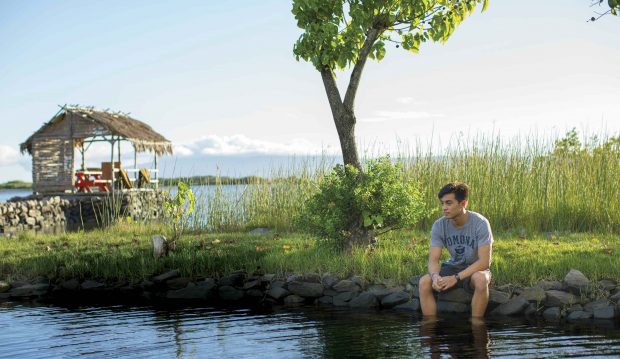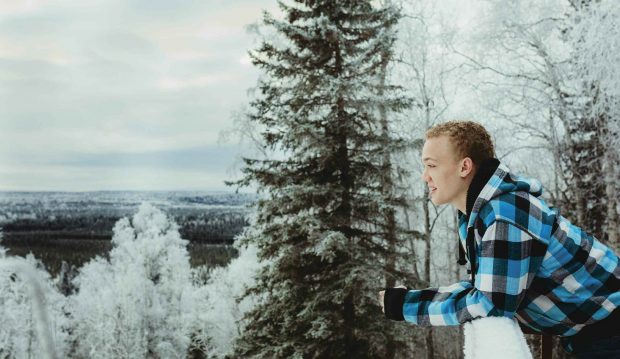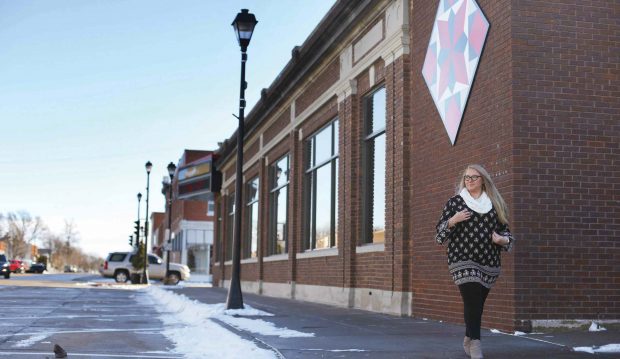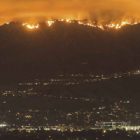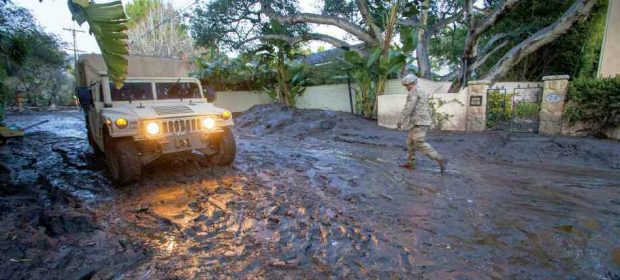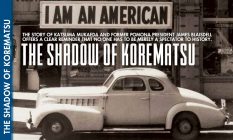
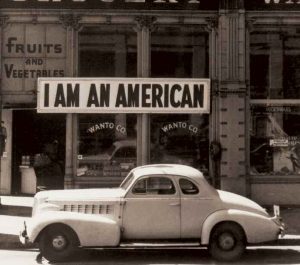 Of the many divisive cases in U.S. legal history, few are as haunting as Korematsu v. United States (1944). In the ruling, the Supreme Court and Chief Justice Hugo Black argued that national security took precedence over individual liberties. And they maintained the legality of the infamous Executive Order 9066—which ordered the incarceration of more than 120,000 Japanese-Americans during World War II.
Of the many divisive cases in U.S. legal history, few are as haunting as Korematsu v. United States (1944). In the ruling, the Supreme Court and Chief Justice Hugo Black argued that national security took precedence over individual liberties. And they maintained the legality of the infamous Executive Order 9066—which ordered the incarceration of more than 120,000 Japanese-Americans during World War II.
This decision has remained a stain on civil liberties ever since, and the June 26, 2018, Supreme Court’s reversal of Korematsu represents the first major victory since 1988 related to rectifying Japanese-American incarceration. However, by overruling Korematsu while approving President Donald Trump’s travel ban, the court has simply appropriated one tragedy to justify another. While Chief Justice John Roberts argued that President Donald Trump’s travel ban is legally different—and constitutional—in comparison to the Korematsu case, they both have the purpose of unjustly singling out individuals based on race. And although the subject of Japanese- American incarceration focuses on racial injustice towards U.S. citizens, it is also a story of immigration and how the U.S. government has employed racialized immigration policies under the vague guise of “national security.”
Even before camps like Manzanar existed for holding U.S. citizens of Japanese descent against their will, the FBI and the Immigration and Naturalization Service—the forerunner to ICE—had built their own camps to house Japanese citizens, often separating families in the process. Although Japanese immigrants had arrived in this country en masse since the 1870s, they were barred from naturalization. Long before U.S. involvement in World War II, the FBI under J. Edgar Hoover drafted extensive lists of so-called “disloyal enemy aliens” because of vague associations with Japan. While Germans and Italians were on this list as well, they numbered far less and always had the option to become U.S. citizens; Japanese immigrants would not share that opportunity until 1952.
 The day after the attack on Pearl Harbor, the FBI conducted mass arrests of Japanese-American community leaders—sometimes in the middle of the night—and detained them in internment camps across the U.S. from Montana to Louisiana. Families often heard very little from their relatives in these camps, where their detainment lasted anywhere from a few months to several years. By 1943, the U.S. began a policy of deporting Japanese-Americans back to Japan as part of an exchange program with U.S. prisoners of war. On July 14, 1945, less than two months before the war’s end, President Harry Truman signed into effect a proclamation that permitted immigration officials to remove internees from the United States if they were deemed “a danger to the public peace.”
The day after the attack on Pearl Harbor, the FBI conducted mass arrests of Japanese-American community leaders—sometimes in the middle of the night—and detained them in internment camps across the U.S. from Montana to Louisiana. Families often heard very little from their relatives in these camps, where their detainment lasted anywhere from a few months to several years. By 1943, the U.S. began a policy of deporting Japanese-Americans back to Japan as part of an exchange program with U.S. prisoners of war. On July 14, 1945, less than two months before the war’s end, President Harry Truman signed into effect a proclamation that permitted immigration officials to remove internees from the United States if they were deemed “a danger to the public peace.”
One man who faced such a scenario was Katsuma Mukaeda.
In 1908, he immigrated from Japan to the United States. According to his 1995 obituary in the Los Angeles Times, he distinguished himself as a law student at USC and established himself as a successful lettuce grower in Southern California and a prominent figure in L.A.
Despite being unable to practice law because he was Japanese, he worked as a paralegal supporting the Japanese community. He was a champion for improving race relations within the greater Los Angeles community, and in 1935 helped establish the Society of Oriental Studies at The Claremont Colleges. According to scholar Malcolm Douglass, the society was founded with the intention of making the “Claremont Colleges the center of Oriental Culture on the Pacific Coast.” With help from a Rockefeller Grant, scholars at Pomona and Scripps worked alongside Mukaeda to established a strong emphasis on Asian Studies, and provided the foundation to the Asian Studies Library at Honnold-Mudd Library. To many, Mukaeda was an ideal U.S. citizen who advocated greater civic engagement and mending the issues of society.
Yet because of his activism, the FBI decided he was the perfect target. On Dec. 1, 1941, Hoover recommended Mukaeda’s internment “in the event of a national emergency.” Within a week after Pearl Harbor, FBI agents detained him with hundreds of other Japanese merchants, Buddhist priests and community leaders in the Los Angeles County Jail. Although no evidence of treason or sabotage was ever produced, Mukaeda was nonetheless interned for being “a suspect.” For years, he was shipped to various internment camps such as Camp Livingston, Louisiana, and Fort Missoula, Montana. By 1945, he found himself at Santa Fe Internment Camp, New Mexico, where a large number of internees were subjected to abuse by guards and sometimes received poorer treatment than enemy POWs in stateside camps. Following Truman’s proclamation, Mukaeda also found himself facing deportation back to Japan.
All the while, his family was separated from him. While Mukaeda was sent to one internment camp after another, his wife, Minoli, and son, Richard, were incarcerated at Poston Incarceration Camp in Arizona. When Minoli received word of the July 1945 deportation list that included her husband, she pleaded to the U.S. government and others for help, arguing that their only son “needs a father’s care now more than anything.” While researching Mukaeda’s FBI file at the National Archives as a part of my graduate studies in June, I found dozens of letters of recommendation and support written to FBI officials, all testifying to his loyalty and future importance of mending relations between Japan and the U.S. The letter writers—mostly long-term residents of the Los Angeles area—ranged from close friends to L.A. Times publisher Harry Chandler and former Pomona College President James Blaisdell.
For President Emeritus Blaisdell, the story of incarceration was clear throughout Southern California. Shortly after the arrest of Mukaeda and the passage of Executive Order 9066, thousands of Japanese-Americans were herded into so-called “assembly centers” at the nearby Los Angeles County Fairgrounds and Santa Anita Racetrack. Three students from Pomona were also forced to leave campus due to the executive order, and were famously given tearful goodbyes by their fellow classmates. While the College itself did what many other universities did at the time—provide students with transfer options to East Coast schools—Blaisdell went further to help out his friend.
Throughout the years of Mukaeda’s internment, Blaisdell wrote multiple letters to the FBI reaffirming both the activist’s loyalty to the U.S. and his importance to the Los Angeles community based on his previous work with Pomona and Scripps, the only Claremont Colleges at that time. Blaisdell’s first letter of May 17, 1944, was sent to help secure Mukaeda a second hearing by the FBI. When the hearing did not clear his name, Mukaeda went back to Blaisdell for help. In a letter to the FBI in November 1945, Blaisdell praised Mukaeda as “a man, I believe, who can be of great usefulness in healing the relations between the two countries and establishing just and honorable relations between the Japanese and Americans in this country.” After a reappraisal of his case, Mukaeda was deemed loyal and freed from the Santa Fe camp in February 1946, after four years in detention separated from his family.
Following the passage of the McCarran-Walter Act in 1952, Japanese nationals were finally able to become United States citizens. A final attestation of their friendship was a letter from Blaisdell to Mukaeda dated June 3, 1953, congratulating him on becoming a citizen and proclaiming,“I only hope that we who have been native born will be worthy of you.” Mukaeda continued to be a champion for the Japanese-American community until his death on November 8, 1995 at the age of 104.
There are two important lessons from Mukaeda’s story. One is that foreign policy dictated by racism and the violent separation of families are both, sadly, a recent chapter in U.S. history. Immigrants of all backgrounds have participated in the building of our nation’s history, and a system focused on exclusion only harms ourselves.
When Mukaeda was being held captive by immigration officials and on the brink of being deported, there were Americans who stood up for him. Pomona’s mission as a college—while constantly evolving—has always focused, in part, on the importance of social justice and activism. Often we think of these stories as being driven by powerful figures that leave everyday people as mere spectators; in reality we all can play a role. Mukaeda’s story, and Blaisdell’s tireless support, remind us of our constant duty to support those victimized by unjust laws or systems such as our current immigration system—and of the ability we have to effect change.
Jonathan van Harmelen ’17 is a graduate student at Georgetown University studying the comparative history of incarceration.

 PCM: You’ve said your first year at Pomona has been a year of listening. What have you heard, and are there some important things you’ve gleaned from it? Any big surprises?
PCM: You’ve said your first year at Pomona has been a year of listening. What have you heard, and are there some important things you’ve gleaned from it? Any big surprises? PCM: The rapidity of change today has gotten quite daunting. What does that do to a planning process? How far ahead can we legitimately plan?
PCM: The rapidity of change today has gotten quite daunting. What does that do to a planning process? How far ahead can we legitimately plan?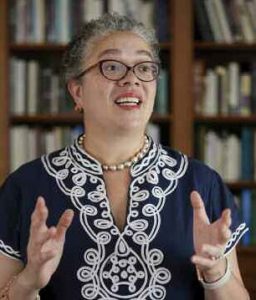 PCM: One of the things that continues to change is the nature of the students who are coming here. They’re all talented, but their experiences change. Their expectations in life change. What do you think we should be looking forward to in the next generation of Pomona students?
PCM: One of the things that continues to change is the nature of the students who are coming here. They’re all talented, but their experiences change. Their expectations in life change. What do you think we should be looking forward to in the next generation of Pomona students?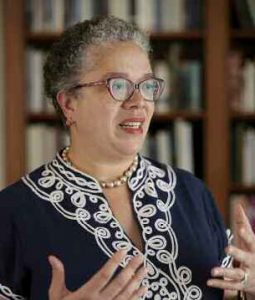 PCM: On the subject of the curriculum, do you think the planning process will need to address the exploding interest in STEM fields and the imbalances that grow out of that?
PCM: On the subject of the curriculum, do you think the planning process will need to address the exploding interest in STEM fields and the imbalances that grow out of that?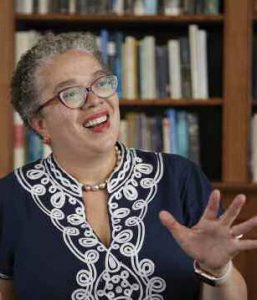 PCM: Pomona has never intentionally grown its enrollment, but as a practical matter, there has been slow, incremental growth over the decades. Should the College be more intentional about how it grows?
PCM: Pomona has never intentionally grown its enrollment, but as a practical matter, there has been slow, incremental growth over the decades. Should the College be more intentional about how it grows?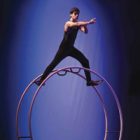
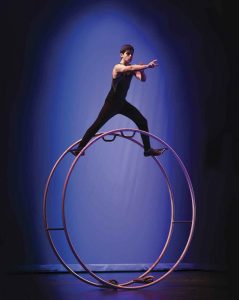
 Grow up in a baseball-centric family in the Lakeview neighborhood of Chicago—near the Chicago Cubs’ famed ballpark, Wrigley Field—and start playing tee-ball at 3. Discover that you’re “a little above average” as a toddler-athlete, meaning that you can run all the way to first base without falling down.
Grow up in a baseball-centric family in the Lakeview neighborhood of Chicago—near the Chicago Cubs’ famed ballpark, Wrigley Field—and start playing tee-ball at 3. Discover that you’re “a little above average” as a toddler-athlete, meaning that you can run all the way to first base without falling down.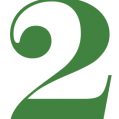 In kindergarten, attend a hands-on workshop by the nonprofit social-circus group CircEsteem. After failing miserably at juggling scarves, test your sense of balance on a rolling globe—a hard sphere about four feet in diameter—and do so well that the group invites you to join them for practices.
In kindergarten, attend a hands-on workshop by the nonprofit social-circus group CircEsteem. After failing miserably at juggling scarves, test your sense of balance on a rolling globe—a hard sphere about four feet in diameter—and do so well that the group invites you to join them for practices. Partly because the workshop was so cool and partly to escape the soccer practice you despise, join CircEsteem’s new after-school program and discover an awe-inspiring new world—a cavernous circus ring where kids up to high-school age are performing all sorts of acrobatics on the ground and in the air.
Partly because the workshop was so cool and partly to escape the soccer practice you despise, join CircEsteem’s new after-school program and discover an awe-inspiring new world—a cavernous circus ring where kids up to high-school age are performing all sorts of acrobatics on the ground and in the air.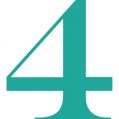 At first, stay in your comfort zone with your rolling globe. Then slowly branch out to other circus arts, such as trampoline and partner acrobatics. Avoid two things like the plague: juggling and aerial acrobatics. Conquer your dread of juggling at the age of 8, and two years later, overcome your fear of heights on the static trapeze.
At first, stay in your comfort zone with your rolling globe. Then slowly branch out to other circus arts, such as trampoline and partner acrobatics. Avoid two things like the plague: juggling and aerial acrobatics. Conquer your dread of juggling at the age of 8, and two years later, overcome your fear of heights on the static trapeze.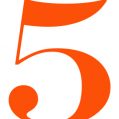 See your first Cirque de Soleil—Corteo—at age 12 and realize that the circus can be truly artistic. Then, when world gym wheel champion Wolfgang Bientzle comes to Chicago to create a Team U.S.A. in the sport, catch his eye and fall in love with the gym wheel under his expert tutelage.
See your first Cirque de Soleil—Corteo—at age 12 and realize that the circus can be truly artistic. Then, when world gym wheel champion Wolfgang Bientzle comes to Chicago to create a Team U.S.A. in the sport, catch his eye and fall in love with the gym wheel under his expert tutelage. Win your first national championship in gym wheel at 14 after telling your mom she didn’t need to stay because the competition was “no big deal.” Go to your first World Championships in Arnsberg, Germany, and make friends from around the world while reaching the finals in all three 18-and-under events, including one fourth-place finish.
Win your first national championship in gym wheel at 14 after telling your mom she didn’t need to stay because the competition was “no big deal.” Go to your first World Championships in Arnsberg, Germany, and make friends from around the world while reaching the finals in all three 18-and-under events, including one fourth-place finish. Two years later, apply to Cirque du Soleil to spend a week at their training facility in Montreal, Canada, and get invited to serve as a temporary gym wheel coach for the Cirque du Soleil acrobats. Then, when the World Championships come to Chicago, defend your home turf by winning two bronze medals.
Two years later, apply to Cirque du Soleil to spend a week at their training facility in Montreal, Canada, and get invited to serve as a temporary gym wheel coach for the Cirque du Soleil acrobats. Then, when the World Championships come to Chicago, defend your home turf by winning two bronze medals. While applying for college, also apply to the École de Cirque in Quebec, a feeder school for Cirque du Soleil. Since you know its three-year program is impossibly exclusive, apply for a gap year in its slightly more accessible one-year program. Get accepted to the three-year program instead. Have to choose between a circus life and Pomona. Choose Pomona.
While applying for college, also apply to the École de Cirque in Quebec, a feeder school for Cirque du Soleil. Since you know its three-year program is impossibly exclusive, apply for a gap year in its slightly more accessible one-year program. Get accepted to the three-year program instead. Have to choose between a circus life and Pomona. Choose Pomona. Even before arriving on campus, make arrangements to form a club at The Claremont Colleges because you want to build a community of people with an interest in the circus arts. Name the club 5Circus and serve as its president for three years before, in the name of continuity, letting someone else take over during your senior year.
Even before arriving on campus, make arrangements to form a club at The Claremont Colleges because you want to build a community of people with an interest in the circus arts. Name the club 5Circus and serve as its president for three years before, in the name of continuity, letting someone else take over during your senior year. Major in neuroscience and decide to become a doctor. But since you didn’t take a gap year before college, decide to take one before entering medical school. Win a Fulbright Fellowship to spend the year in Israel, melding your passions for medicine and the circus by studying an innovative paramedical practice known as “medical clowning.”
Major in neuroscience and decide to become a doctor. But since you didn’t take a gap year before college, decide to take one before entering medical school. Win a Fulbright Fellowship to spend the year in Israel, melding your passions for medicine and the circus by studying an innovative paramedical practice known as “medical clowning.”


 As a thought experiment, we asked alumni, faculty and staff experts in a wide range of fields to go out on a limb and make some bold predictions about the years to come. Here’s what we learned…
As a thought experiment, we asked alumni, faculty and staff experts in a wide range of fields to go out on a limb and make some bold predictions about the years to come. Here’s what we learned…






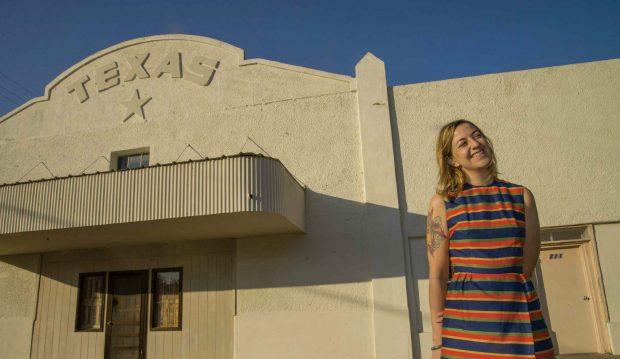
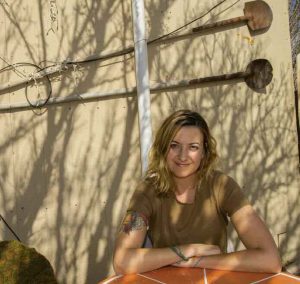 It was also at Pomona that Monroe started to get serious about writing. Looking back, she credits the late Disney Professor of Creative Writing, David Foster Wallace, with helping her to grow from a lazy writer into a hardworking one. “He would mark up stories in multiple different colors of pen, you know, read it three or four times, and type up these letters to us,” she explains. “You really just felt like you were giving him short shrift and yourself short shrift if you turned in something that was kind of half-assed.”
It was also at Pomona that Monroe started to get serious about writing. Looking back, she credits the late Disney Professor of Creative Writing, David Foster Wallace, with helping her to grow from a lazy writer into a hardworking one. “He would mark up stories in multiple different colors of pen, you know, read it three or four times, and type up these letters to us,” she explains. “You really just felt like you were giving him short shrift and yourself short shrift if you turned in something that was kind of half-assed.” Headquarters for the whole sector is just south of town, near El Cosmico, and uniformed Border Patrol agents are a conspicuous presence in Marfa’s coffee shops and on its streets. According to the sector’s website, it now employs about 700 agents and 50 support staff. Among them, Monroe says, are quite a few young men and women who grew up right here in town.
Headquarters for the whole sector is just south of town, near El Cosmico, and uniformed Border Patrol agents are a conspicuous presence in Marfa’s coffee shops and on its streets. According to the sector’s website, it now employs about 700 agents and 50 support staff. Among them, Monroe says, are quite a few young men and women who grew up right here in town. LEAVING MARFA, I stop for a few moments to take in one of its most iconic images—a famous art installation known as Prada Marfa. If you search for Marfa on Google, it’s the first image that comes up. And a strange scene it is—what appears to be a tiny boutique, with plate-glass windows opening onto a showroom of expensive and stylish shoes and purses, surrounded by nothing but miles and miles of empty scrub desert. Looking at it before I made the trip, I thought it was a wonderfully eccentric encapsulation of what Marfa seemed to stand for.
LEAVING MARFA, I stop for a few moments to take in one of its most iconic images—a famous art installation known as Prada Marfa. If you search for Marfa on Google, it’s the first image that comes up. And a strange scene it is—what appears to be a tiny boutique, with plate-glass windows opening onto a showroom of expensive and stylish shoes and purses, surrounded by nothing but miles and miles of empty scrub desert. Looking at it before I made the trip, I thought it was a wonderfully eccentric encapsulation of what Marfa seemed to stand for.
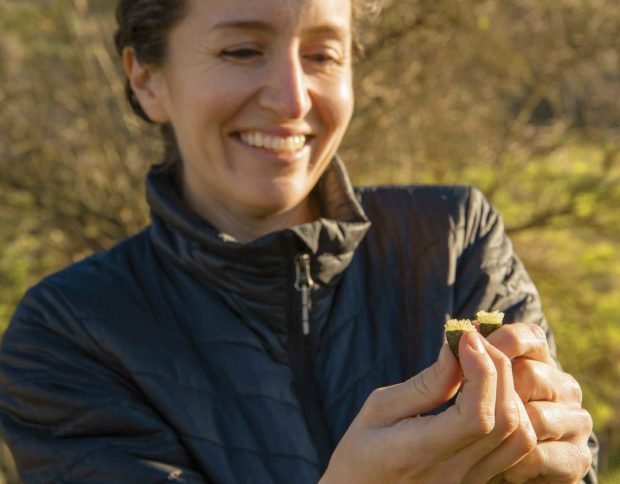

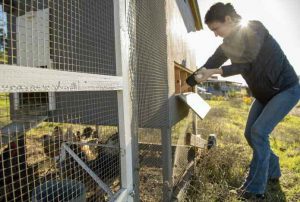
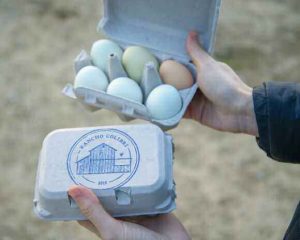

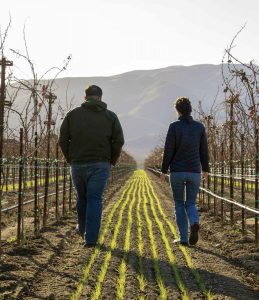 “She used to have this little hand pump and walk around the farm, so I got this big pump that hooks up to the battery of this Kawasaki Mule,” says Chris, who explains he drives the small vehicle with Jazmin hunched next to him spraying the weeds. “The neighbors think we’re crazy because I’ll be driving as slow as possible and she’ll be hitting these little things at the base. The neighbors ask why we don’t just boom spray and kill it all and then bring back only what we want, but Jazmin is very passionate about the local flora and fauna.”
“She used to have this little hand pump and walk around the farm, so I got this big pump that hooks up to the battery of this Kawasaki Mule,” says Chris, who explains he drives the small vehicle with Jazmin hunched next to him spraying the weeds. “The neighbors think we’re crazy because I’ll be driving as slow as possible and she’ll be hitting these little things at the base. The neighbors ask why we don’t just boom spray and kill it all and then bring back only what we want, but Jazmin is very passionate about the local flora and fauna.”
